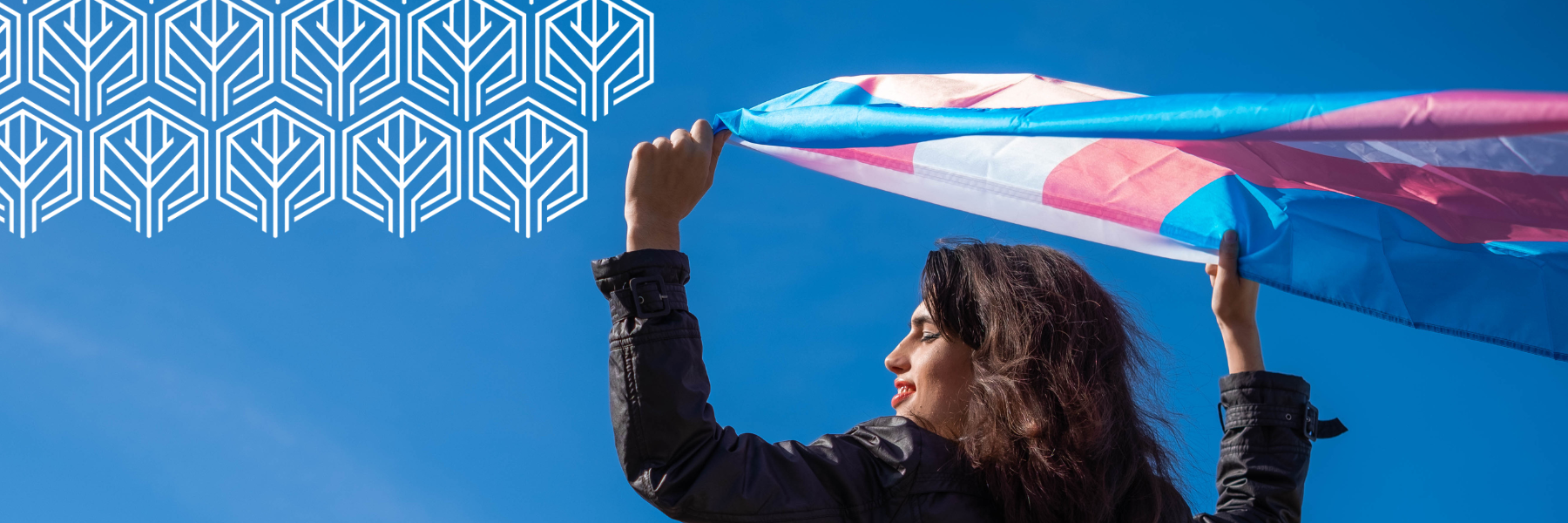[vc_row][vc_column][vc_column_text css=”.vc_custom_1700318432768{margin-bottom: 0px !important;}”]Trans people’s existence is not an ideology. Transness is a natural and inevitable aspect of the wondrous biological and social diversity of human beings. As humans engage in a debate about whether or not some humans get to use bathrooms, attend school safely, and read stories to children, much of the panic regarding “gender ideology” is fueled by myths and misinformation that appear to have taken off like the wildfires that plagued us this Spring and Summer.
Like wildfire, these myths are dangerous because they kill. Trans youth are at 7.9 times the risk of attempting suicide and 4 times more likely to be the victims of violent crime than their cis counterparts. Those who lose their lives to violence continue to be overwhelmingly trans, Black women. That’s why November 20 is Trans Day of Remembrance.
Here are some of the most toxic myths fanning the flames of fear and hate, followed by the facts that can douse those flames.
Myth 1: People come in two kinds, male and female.
Fact: There is ample scientific evidence that human biology is far more complex than inny equals girl, outie equals boy.
MRI-based studies show that the putamen (the region of the brain that controls cognitive functioning and other tasks) in trans people differs from structural norms that are consistent with their assigned gender and more closely resembles their felt gender. (Flint et. al. 2020; Clemens et. al. 2021)
Epigenetics is the emerging science regarding how different genes in our biological makeup get switched on and manifest. This epigenetic study found that since all human embryos start with the potential to be male or female, hormonal variation during sex differentiation can cause genetic changes that cause a person’s gender to be different from their sex.
I’m a science junkie and I could go on with articles about hormone receptor mutations and genetic perspectives. But I think you get the idea that the biology of transness is a lot more complicated than the primer we got in grade school.
Myth 2: People who think their gender is different from their biological sex are mentally ill.
Fact: Well, technically being trans is a mental illness. The 5th edition of the Diagnostics and Statistics Manual (DSM-V), a compendium that provides diagnostic criteria for all mental illnesses, refers to transness as “gender dysphoria”. There is consensus among the mental health professionals that write the DSM that the appropriate treatment is supporting the person to live as their felt gender. Receiving a diagnosis and treatment for gender dysphoria is an involved process. It takes years to be approved for interventions like surgery. People under the age of 16 cannot receive permanent interventions like surgery. As the emerging biological science suggests, the classification of “gender dsyphoria” as a mental illness is controversial in trans communities. For now, people have to meet the diagnostic criteria in the DSM-V to receiving gender-affirming healthcare.
Myth 3: Trans people are emerging because of the new “gender ideology”.
Fact: While some of the terminology being used is relatively new, people whose gender experience differs from biological “norms” have always existed. Research shows that over 150 Indigenous nations on Turtle Island recognized a third gender before colonization. Indigenous communities were by no means unique. For example, hijras in South Asia have been recognized as a gender group dating back to the 1200s. Similarly, in pre-colonial Uganda, there was the mudoko dako.
Myth 4: Talking about trans people in schools “sexualizes children” and “grooms them” into becoming trans.
Fact: As the facts above demonstrate, trans people have always been here. People are born trans as a result of complex biological factors. The kind of experience they have is determined by society’s attitude toward them. In the pre-colonial societies I mentioned above, trans people were honored and respected members of their communities leading secure and productive lives. Talking about trans people will not make more of them magically appear. Explaining sexual and gender diversity to kids is no more inherently sexual than explaining heterosexual marriage. Failing to talk about LGBTQ+ people won’t make them go away. However, silence will make people more unsafe.
It’s fitting that November 20 is also National Child Day. The goal of the day is to open dialogue about the vulnerability of children and what we can do collectively to keep them safe and honour their rights. Telling kids the truth is how we can keep them safe. Treating all people with dignity and respect is how we create environments where kids feel safe to be themselves. Arming kids with the language to talk about their bodies and experiences is how we keep them safe from actual groomers. Building up their confidence and self-respect is how we keep trans kids alive and well.
Keira Grant (she/her) Inclusion and Engagement Lead – Racialized Communities
Keira brings a wealth of experience to the Online Community Moderator role. She is a Queer, Black woman with a twenty-year track record in Equity, Diversity, and Inclusion (EDI) education, projects, and community building initiatives.
[/vc_column_text][/vc_column][/vc_row]
